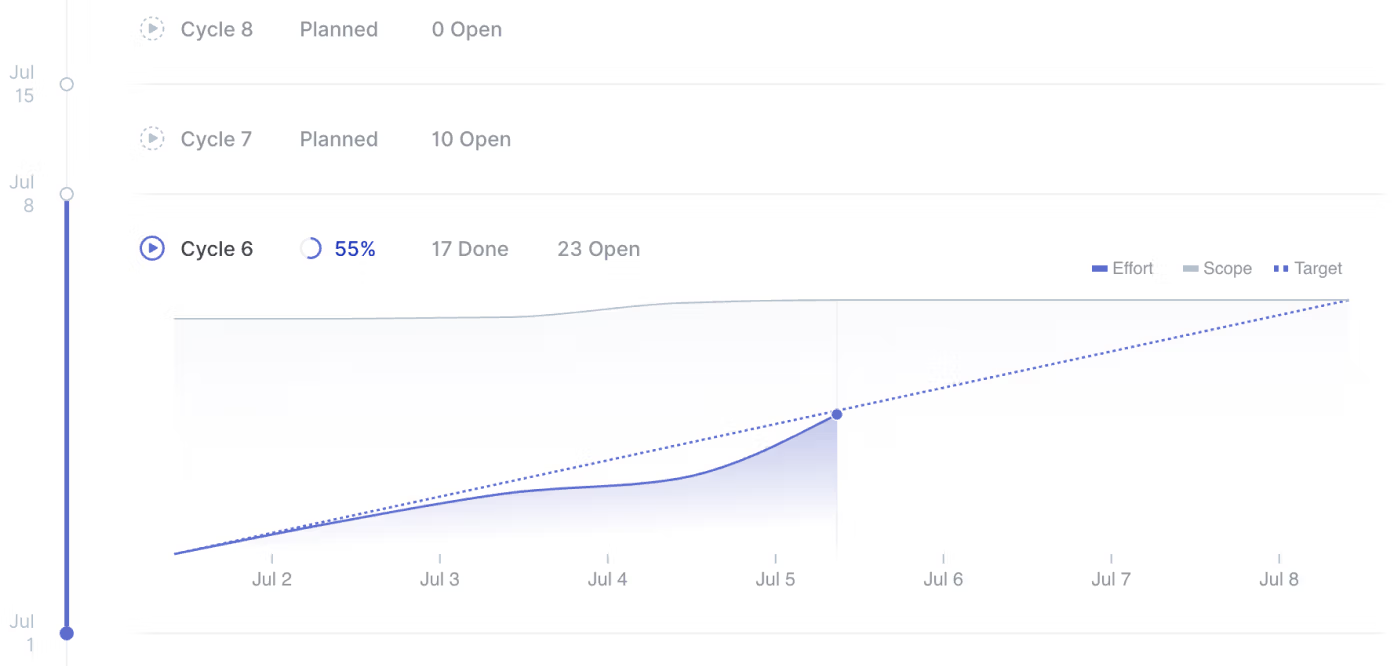Cycles
Cycles

You might know them as sprints, but we decided to call them cycles to give them meaning outside of the agile methodology. Whether you work in agile ways or not, cycles provide a great way of planning and measuring iterative development cycles. Take some time each week (or weeks, depending on how long you configure your cycle to be) to plan what your team is supposed to work on next, then let Linear measure how you're executing towards that goal.
You can enable cycles in your team settings, but need to first opt-in to see Developer preview in your preferences. You'll choose how long each cycle is and what day of the week they start and Linear takes care of the rest. Cycles are automatically created and closed based on the selected schedule and any unfinished work in each cycle will automatically be moved to the next cycle.
Estimation
You can now opt in to show time estimates for your issues. Estimation complements cycles and lets your team communicate the complexity of each issue.
Turn on estimates in the team settings. You can choose between a number of ways to estimate issues. Use a linear scale, exponential scale, Fibonacci scale, or use T-Shirt sizes to describe the complexity of each issue. Regardless of what scale you choose, cycles will automatically compute the overall effort required to complete the cycle and update its graphs accordingly.
Other improvements and fixes
- Added action to set estimates: Shifte
- Added actions to assign the cycle of an issue: Shiftc
- Added an action to assign an issue to the active cycle: ShiftCommand/Ctrlc
- The issue lists will show the estimate and cycle of each issue
- Issues are automatically moved out of the backlog when added to a cycle
- Issues are automatically removed from a cycle if move back to the backlog
- Added toasts when you move issues between active and the backlog so that issues just don't disappear on you